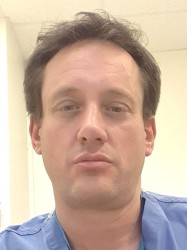BibTex format
@article{Chen:2018:10.1148/radiol.2018171567,
author = {Chen, L and Carlton, Jones AL and Mair, G and Patel, R and Gontsarova, A and Ganesalingam, J and Math, N and Dawson, A and Basaam, A and Cohen, D and Mehta, A and Wardlaw, J and Rueckert, D and Bentley, P},
doi = {10.1148/radiol.2018171567},
journal = {Radiology},
pages = {573--581},
title = {Rapid automated quantification of cerebral leukoaraiosis on CT: a multicentre validation study},
url = {http://dx.doi.org/10.1148/radiol.2018171567},
volume = {288},
year = {2018}
}

